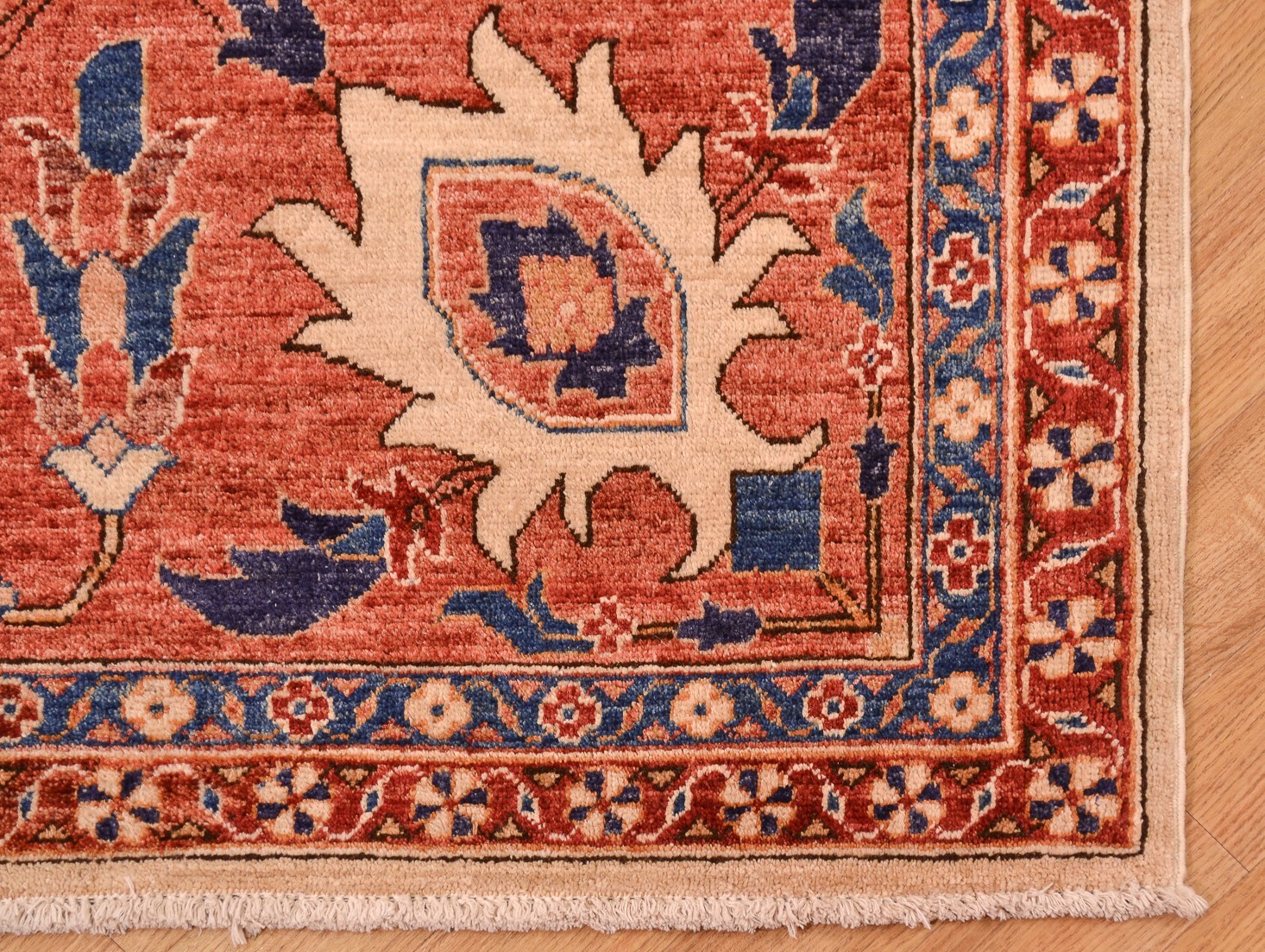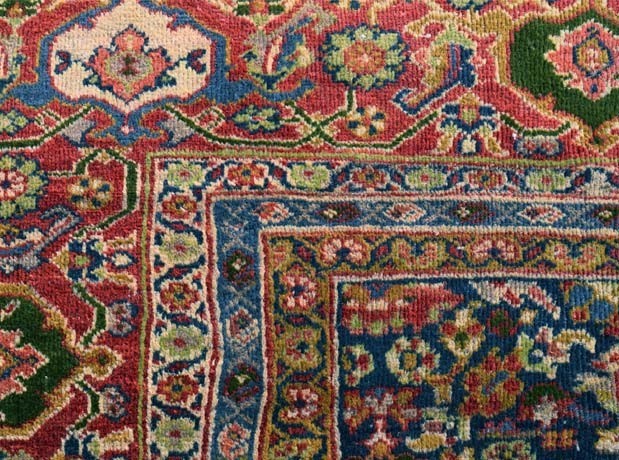Purchasing a new rug for your living room?
Handmade Sultanabad rugs can be a great option!
First crafted in the city of Arak in Iran, previously known as Sultanabad, these magnificient rugs can be a perfect addition to any room!
Read on to find out more about the history of Sultanabad rugs, the type of design patterns they have, their color themes, materials, and more.

Handmade Sultanabad Rugs: The History of Their Origin
During the late 19th century, a German rug company named Zeigler and Co. established its very own manufactory in Arak/Sultanabad.
The aim of establishing a carpet manufacturing set up in Iran was to leverage from the skills of Iran’s master carpet weavers and craft rugs that were particularly designed keeping the Western market in mind.
These rugs, unlike the many other types of Persian and Oriental carpets, featured somewhat subtle design patterns and lighter hues that were meant to blend in well with Western interiors and décor styles.
As a result, the rugs crafted – handmade Sultanabad rugs – turned out to be extremely desirable and highly-sought after both in the Eastern as well as the Western Hemisphere.
Today, in the modern market of high-quality handmade rugs, the Sultanabad carpets hold a special place and are in a league of their own. These rugs feature design patterns that are traditional, magnificent, and captivatingly enchanting yet elegant and infused with the Western style.
To put it precisely, if you’re buying a Sultanabad rug, know that the popularity and fame of these rugs could be traced back to the mid-19th century.
Since the carpets were designed and hand-knotted to perfection with the main goal of exporting them to the European market, the quality of these artifacts is incomparable and exceeds all quality standards required to manufacture exquisite handmade rugs.
However, it should be noted that Sultanabad rugs weren’t only crafted in Iran. Apart from the Ziegler Sultanabad rugs, the Persian Sultanabad rugs are also highly famous for their charming patterns.
The Persian Sultanabad rugs tend to be quite different from the large room-sized Persian carpets that were majorly crafted during the classical era of carpet manufacturing in the Eastern region.
When one sets his eyes on the 19th century antique handmade rugs of the Sultanabad rug category, one can see their ornamental design patterns to be intricate and filled with small-scaled details, no matter how large the size of the rug may be.

The Design Patterns and Color Schemes
The type of traditional rugs that would blend in perfectly with almost any décor style or theme, handmade Sultanabad rugs feature unique design patterns that are influenced by the Western styles.
The patterns bear a huge similarity to those of Serpai and Heriz rugs. However, the design of Serpai and Heriz carpets always tends to be more classical and curvilinear. On the other hand, Sultanabad rugs are often filled with vine scrolls, palmettes, and intricate flowery patterns.
Talking of their color combinations, these carpets are mostly crafted in glowing subtle and earthy tones that are sometimes infused with bold shades. The common base colors of Sultanabad rugs include ivory, gold, rose, beige and blue.
Over these glowing pastels run the intricate vines and palmettes, resulting in the formation of a rug that’s rare, magnificently captivating, and although always big in size, never overwhelming in its look and appeal.
The Weaving of Sultanabad Rugs
Similar to the creation of nomadic and tribal rugs, handmade Sultanabad rugs are produced mostly on the family level.
Artisans and weavers who’ve learnt the art of carpet weaving from their forefather and dedicated their lives to keeping the art alive work multiple hours per day to create handmade Sultanabad rugs.
They’re finely knotted to perfection mostly in the sizes of 9ft x 12ft to 10ft 6in x 14ft.
The ancient Persian weaving techniques are employed in the making of these rugs, and they also have a high-knot density. Both of these factors contribute highly to the durability and strength of handmade Sultanabad rugs.
The Materials Used
To craft these premium quality carpets, on the most premium quality materials are used.
Ost commonly, wool, cotton and silk is used in the making of handmade Sultanabad rugs. In some cases, came and goat hair are also added to further enhance the look, feel and quality of the rug.
All the materials used are 100% natural and free from all sorts of chemicals. So much so, that even the wool used in a handmade rug’s production is dyed with natural pigments.
The result?
A velvety feel, amazing texture, and a high-quality rug that’s eco-friendly and safe to be placed in a home with small kids and pets.
The Durability, Longevity, and Strength
Here comes the major reason why buyers, designers, and collectors always prefer handmade rugs over their machine-made counterparts.
Similar to most other handmade rugs crafted in the Eastern countries including Pakistan, Iran, Afghanistan, and Turkey, handmade Sultanabad rugs are famous for their long lifespan.
You can locate antique Sultanabad rugs in museums to this day. And not just there, but you can also find such antique rugs for sale online. However, know that an antique Sultanabad rug would be much more expensive than one that’s been crafted recently.
Not only do these rugs last long, but due to their high knot density, they can also endure heavy furniture and high foot traffic.
Plus, owing to the fact that handmade Sultanabad rugs are dyes using natural pigments, their colors don’t bleed and rarely fade.
How to Keep Your Handmade Sultanabad Rug Clean?
When you bring home an expensive rug, it’s important to follow a proper cleaning routine if you wish for your investment to last long and the rug to retain its original shape for years on end.
To keep your rug clean, use a vacuum cleaner 2-3 times per week. Also, in case of accidental spills and stains, treat the affected area immediately and don’t let the stains dry out. Remember, old stains are always harder to get rid of.
Lastly, don’t forget to keep your rug safe from things that can destroy your wool rug!













